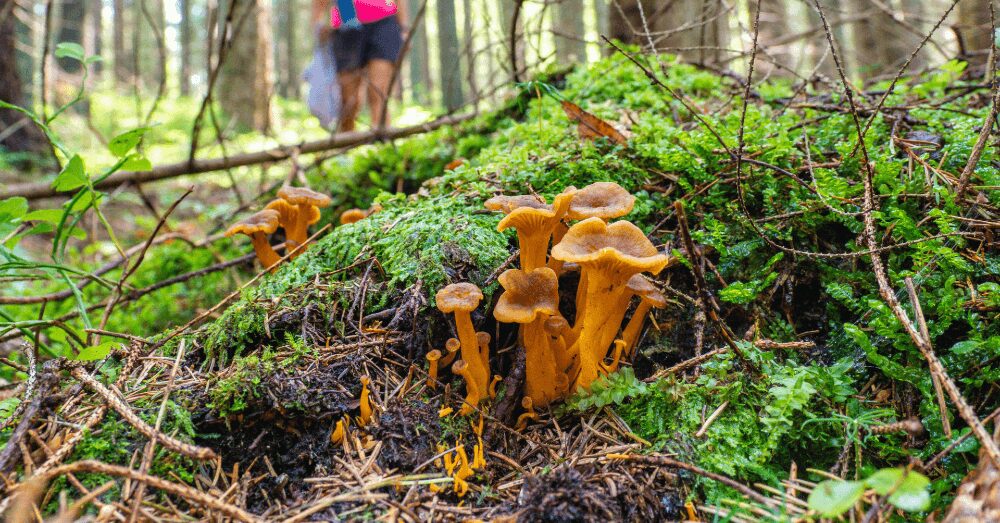Whether you find yourself on a long wilderness expedition or lost in the woods waiting for rescue, you need to understand wild foraging.
What will you eat when you’re lost in the woods and have run out of food? How much stuff can you carry on your wilderness expedition? If you understand how to identify edible plants, you don’t have to take as much with you and can survive and stay safe when you’re in the forest. This skill can come in handy during your regular hikes as well.
Here are some wild foraging tips to help you identify the plants that you can eat.
The cluster and color matter
Berries are an excellent source of carbohydrates, fiber, and vitamins, but you need to know which berries you should eat and which ones you should avoid. Berries with tightly packed clusters are typically good to eat and won’t harm you. Blue, black, and purple berries are also mostly edible, but you should consider testing them first. Once you get out of these colors and clusters, you might want to avoid any of the berries you find.
Catch and eat insects
You might not want to eat bugs, but part of wild foraging for survival means catching bugs and enjoying a meal of creepy crawlers. Insects are almost pure protein, which makes them great for a meal when you need to eat something. Some of the most safe-to-consume bugs are earthworms, mealworms, boiled ants, crickets, and grasshoppers. Make sure you don’t choose fire ants and remove wings and legs before eating. You might find that you actually enjoy some insects.
Green plants can make a wild salad
Green vegetables are important to give you some of the nutrients you need while you’re in the wilderness. There are many wild plants that are safe to eat, including chickweed, dandelion, clover, chicory, cattail, and wild mustard. You might also find some wild onions, which can add a bit of a traditional flavor to your salad. Edible greens can make it much easier for you to survive when you’re stuck in the wilderness for days before anyone finds you or shows up to take you home.
Don’t eat foods near roads or farms
If you’re using roadways or farmland to help find your way back to civilization, you’ll want to avoid eating any of the vegetation that’s near the roads or has been treated during the fertilization or pesticide process at the farm. Car exhaust, oil, lead, or other items that are expelled from cars can damage the plants near the roadways, and that might cause you to get sick. Vegetation that’s been coated in herbicides and pesticides needs to be processed before it can be eaten, making it dangerous for you.
Avoid poisonous plants
Picking out the edible plants can be tricky, but if you know what some of the poisonous plants look like, you’ll be on your way to safe wild foraging. Avoid holly berries and hemlock, and stay away from poison ivy, poison oak, and poison sumac. These plants will make your time in the wilderness much more uncomfortable and might even cause you to become dehydrated, which is one of the worst things that can happen when you’re spending every day exposed to the elements.
How can you identify safe plants?
Here are a few steps you can follow to help you identify the plants that are safe to consume. The first part of this is knowing and identifying some plants, but you might not know every plant you come across. Use these tips to help:
- Rule out poisonous plants – Mushrooms, plants with milky sap, fine hairs, spines, umbrella-shaped flower clusters, and waxy leaves are out.
- Do a skin test – Take a piece of the plant and rub it on your inner forearm or outer lip. Wait 15 minutes for a reaction.
- Perform a taste test – If the plant passes the skin test, taste the same part of the plant and wait five minutes for another reaction.
- Larger taste test – If you don’t taste any bitterness or soapy flavor or feel any numbness from the small taste test, take a teaspoon of the plant and chew it for five minutes. Spit out extra saliva regularly and then swallow. Wait eight hours before moving forward.
- Eat a little more – If you have no reaction after eight hours, eat another teaspoon of the plant and wait another eight hours. If you have no reaction, you can eat that part of the plant.

